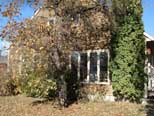|
MSc in Integrative Ecosocial Design |
 |
 |

Richard Kühnel |
|||
| |||||||||||||||||||||||||||
| <<<previous page | next page >>> | |||
|
Navigation Resources Bibliography Photos Drawings Appendix Journal Forum Presentation Resume Portfolio Help | Final Review
Project Management
Planning The main tool for planning and managing the implementation was (and still is) the project plan. The original version covered the whole project from beginning to end and only the first year was planned out in detail. The intention is to review the plan at the end of the each year and make adjustments as necessary. After the first phase of implementation the need became obvious to break down the yearlong plan into smaller 2 - 3 months sections. This allows a quite realistic estimate what can be achieved instead of trying to fit everything in the available timeframe and finances. Budget & Cash Flow We did pay special attention to the financial side of this project, as we are perceiving that this part of the design work is often under-represented and a cause of stress and conflict. This project is not primarily concerned in creating a financial yield, but an ecological and social yield in balance with it. Although, by housing our offices and work places, increasing the degree of self-sufficiency and minimizing transportation, our expenses are significantly reduced. Though there may be some increased cost and time necessary for maintenance and management. In the future when energy production and water systems are in place our utility costs will be further reduced and there will be income-producing effects, too. One are the classes and workshops held on this property that will give 10% directly to the project starting in 2008, another is the potential of developing a small, high value cash crop. The numbers for the budget and cash flow are updated till the end of August. At this point it shows that we overran our labor costs significantly, by about US$7000 - $8000, including an unexpected high amount for additional groceries for our help. This we will need to take into account for next years planning and budgeting. We were aware that our labor expenses would be above what we budgeted and decided to go along with that.
Each expense was assigned to its respective, main element or task wherever possible. I have not been able to split up the costs between the different elements when it was related to more then one element or task, like renting equipment that was used for several different jobs. For several items we are under the budgeted amount. This is due to the fact that the labor cost is not added into most of the items, but tracked in its own category. In total we are also below estimates, mostly because we have not implemented elements we had budgeted for. I did verify this, by adding all the estimated amounts for not started or the remaining budget for not completed elements. The currently actually spent amount minus the overrun for labor plus this previously calculated amount is about the original estimated budget. I decided to complete what we can before the outdoor season is over but not increase our labor costs and not to rush things along. As experienced and described earlier the hurrying along is often an antidote to finding sustainable solutions. | |||
| <<<previous page | next page >>> | |||
|
Copyright © 2002 - 2011 Richard Kuhnel
|